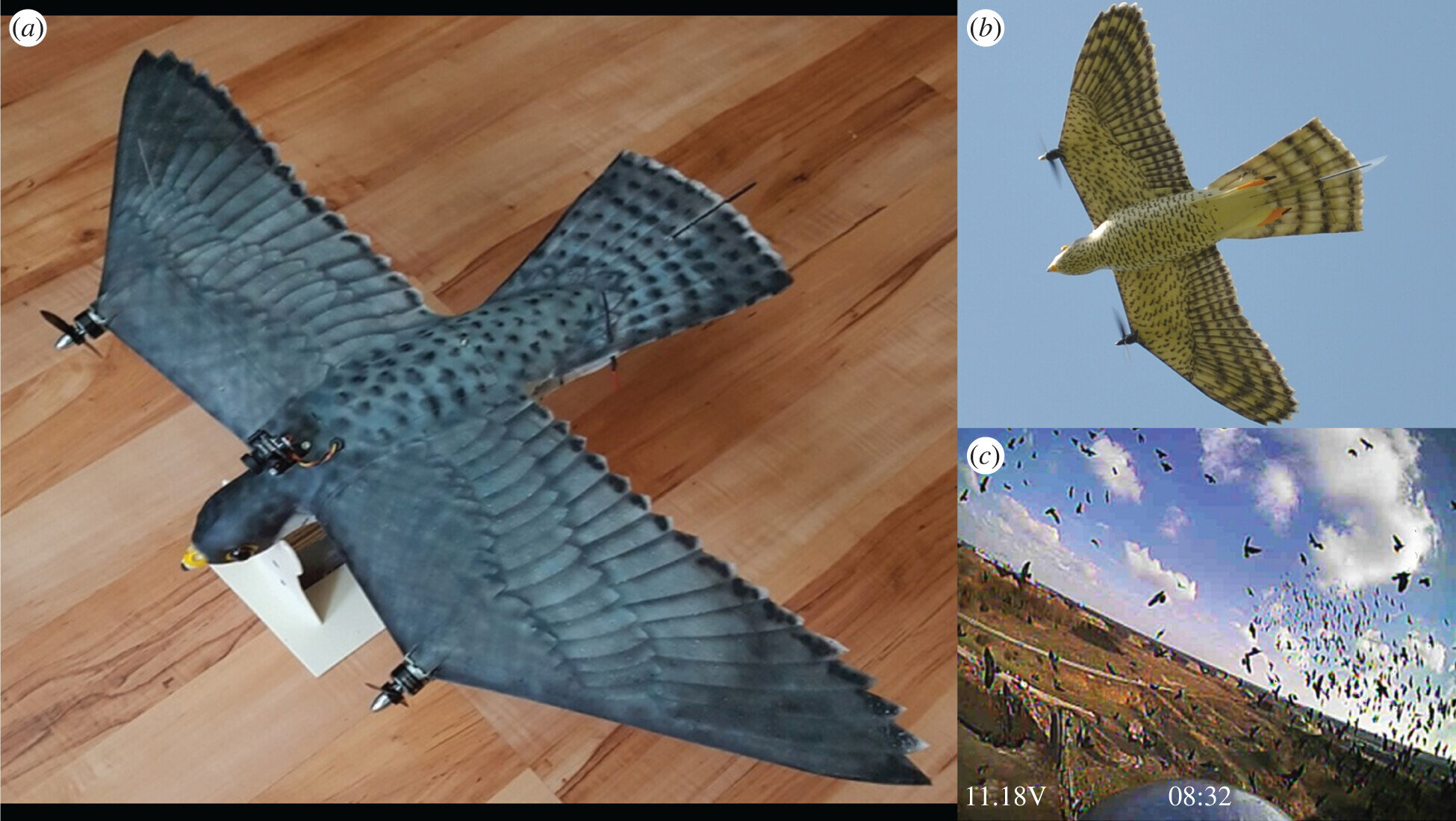RobotFalcon found to be effective in chasing off flocks of birds around airports
A team of researchers from the University of Groningen, the University of Tuscia, Roflight, Lemselobrink and the Royal Netherlands Air Force has designed, built and tested a robot named RobotFalcon fashioned to look and fly like a peregrine falcon as a means of driving off flocks of birds around airports. The group describes their approach in Journal of the Royal Society Interface.
Birds, whether alone or in flocks, are a hazard to flying aircraft. When a plane strikes a bird, damage can result—occasionally with catastrophic results. The plane that famously landed on the Hudson River in 2009, for example, was the result of birds being sucked into the plane’s engines, causing their failure. Scientists have been working on ways to deter birds from entering flight spaces but thus far have met with only partial success.
Currently, drones are used to scare birds away, as are trained falcons and systems that blast sounds of birds in distress. In this new effort, the researchers took a new approach—they designed and built a remote-controlled flying robot that resembles a peregrine falcon. They chose the falcon because it catches and kills other birds, which therefore try to avoid it.
Their result, the RobotFalcon, is made of fiberglass and polypropylene and is painted to look like a real falcon. It is powered by an internal engine that drives two propellers situated on the front of each wing. To capably mimic the flying patterns of a falcon, the researchers studied the flying characteristics of real birds and then added features to their fake bird that would allow it to fly in similar ways.
Testing showed the RobotFalcon capable of mimicking falcon flight and of scaring away birds. During field tests, the robot bird scared away entire flocks of birds within five minutes of arrival; on half of these deterrence flights, it was able clear the field within 70 seconds. The team conducted multiple tests with the same flock of birds over three months and found no habituation—they were afraid of it no matter how often they saw it.
Rolf F. Storms et al, Deterrence of birds with an artificial predator, the RobotFalcon, Journal of The Royal Society Interface (2022). DOI: 10.1098/rsif.2022.0497
© 2022 Science X Network
Citation:
RobotFalcon found to be effective in chasing off flocks of birds around airports (2022, October 26)
retrieved 26 October 2022
from https://techxplore.com/news/2022-10-robotfalcon-effective-flocks-birds-airports.html
This document is subject to copyright. Apart from any fair dealing for the purpose of private study or research, no
part may be reproduced without the written permission. The content is provided for information purposes only.
For all the latest Technology News Click Here
For the latest news and updates, follow us on Google News.

